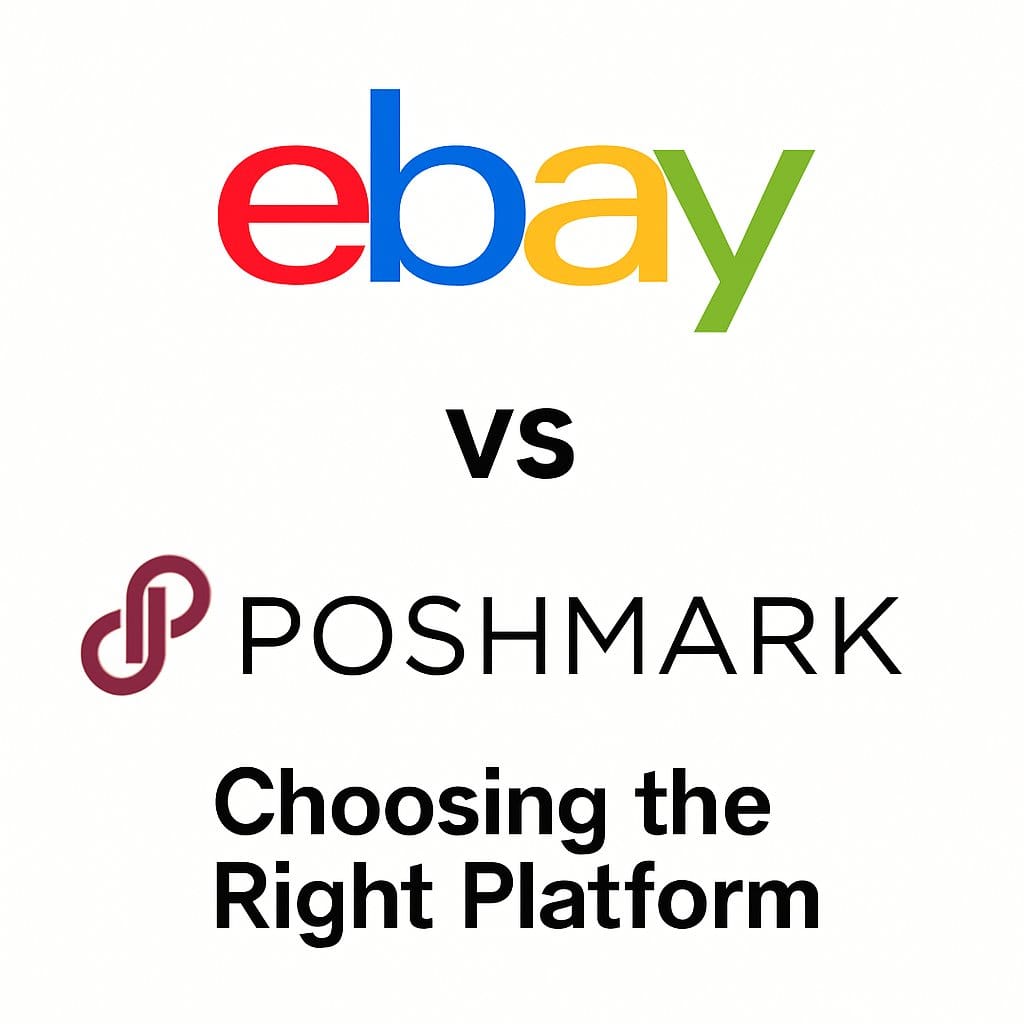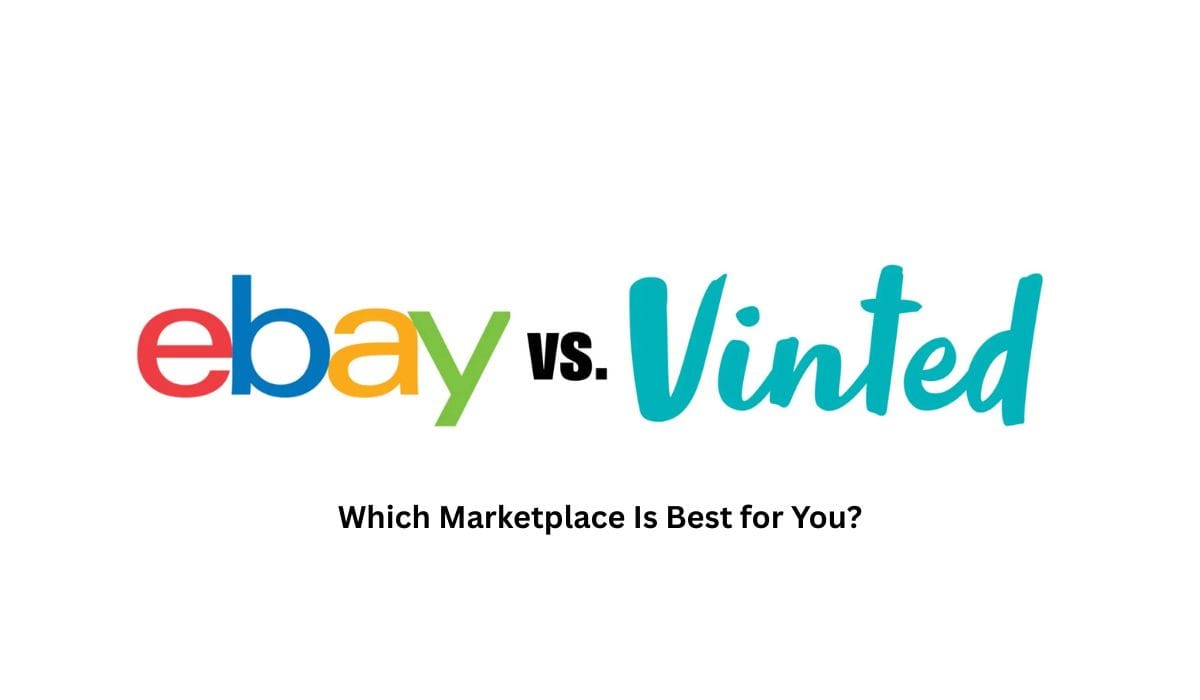Your Ultimate 2025 Guide to Choosing the Right Platform for Maximum Profits
Are you considering selling your clothes online but can’t decide between Poshmark and eBay? Both platforms offer unique benefits and challenges. If you’re looking for a simple, fashion-focused selling experience, Poshmark is the go-to, while eBay offers a wider reach and more flexible options if you want to sell a variety of items.
Understanding the differences in fees, shipping, and how buyers shop can help you pick the best site for your needs. You’ll also want to think about how much time you want to spend marketing your listings or handling customer support. Each platform attracts a different kind of shopper, so your experience as a seller will depend on what and how you want to sell.
Table of Contents
Key Takeaways
- Poshmark is easier for fashion items, while eBay reaches more types of buyers
- Fee structures and shipping processes differ between each platform
- Your selling strategy should match the audience and features of the site you choose
- Both platforms can be profitable when used correctly
What Is Poshmark?
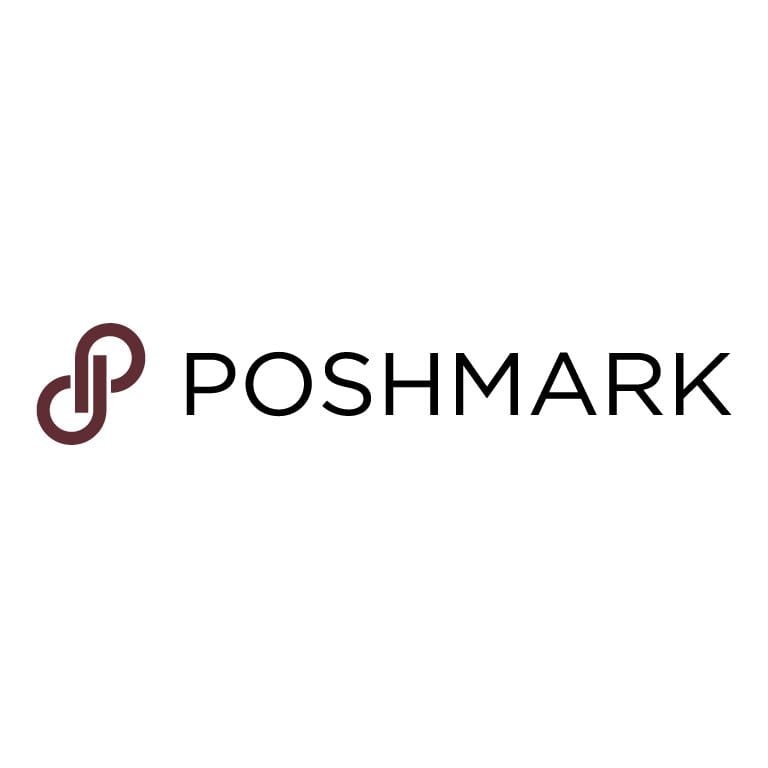
Poshmark is a social commerce platform that launched in 2011, specifically designed for buying and selling fashion items. Think of it as Instagram meets marketplace for clothes, shoes, and accessories. The app focuses on creating a community where users can follow each other, share listings, and participate in virtual “Posh Parties” themed around different fashion categories.
The platform operates exclusively in North America, including Canada, and has built its reputation around making fashion resale simple and social. Poshmark handles authentication for luxury items over $500, provides prepaid shipping labels, and maintains a three-day inspection period for buyers to ensure satisfaction.
What Is eBay?
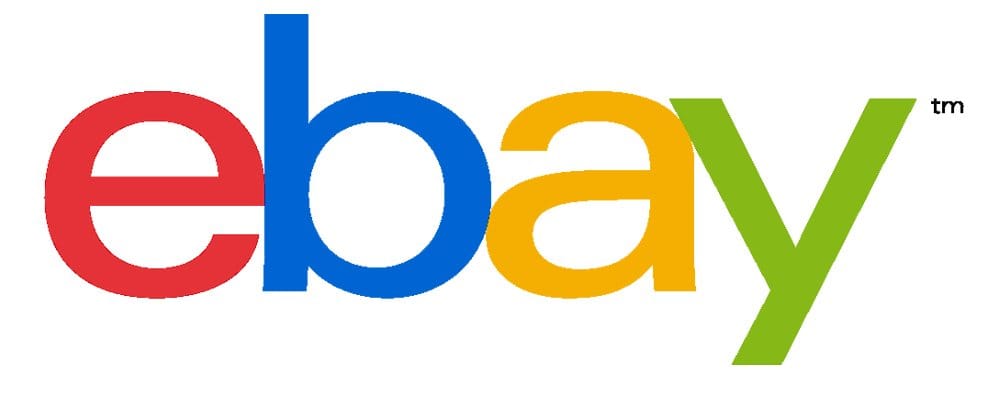
eBay is one of the original online marketplaces, founded in 1995 as an auction site where people could bid on items. Today, it has evolved into a global e-commerce platform supporting both auction and fixed-price listings across virtually every product category imaginable.
While eBay started with collectibles and unique items, it now serves as a comprehensive marketplace where you can sell everything from electronics to clothing to vehicles. The platform operates in over 190 countries and supports multiple languages and currencies, making it a truly international selling platform.
2024-2025 Resale Market Insights

The secondhand clothing market has experienced explosive growth, reaching $177 billion globally in 2024. According to ThredUp’s annual resale report, the market is projected to grow 127% by 2026. Here’s what this means for sellers:
Platform Performance Data:
- Poshmark users average $1,090 in annual sales, with top sellers earning $100,000+
- eBay fashion category represents 23% of total platform sales
- 73% of Gen Z shoppers have purchased secondhand clothing in the past year
- Designer items see 40% higher sell-through rates on specialized platforms
Regional Selling Trends: California, Texas, and New York lead in resale activity, with urban areas showing 60% higher engagement rates than rural markets.
Platform Backgrounds and User Demographics
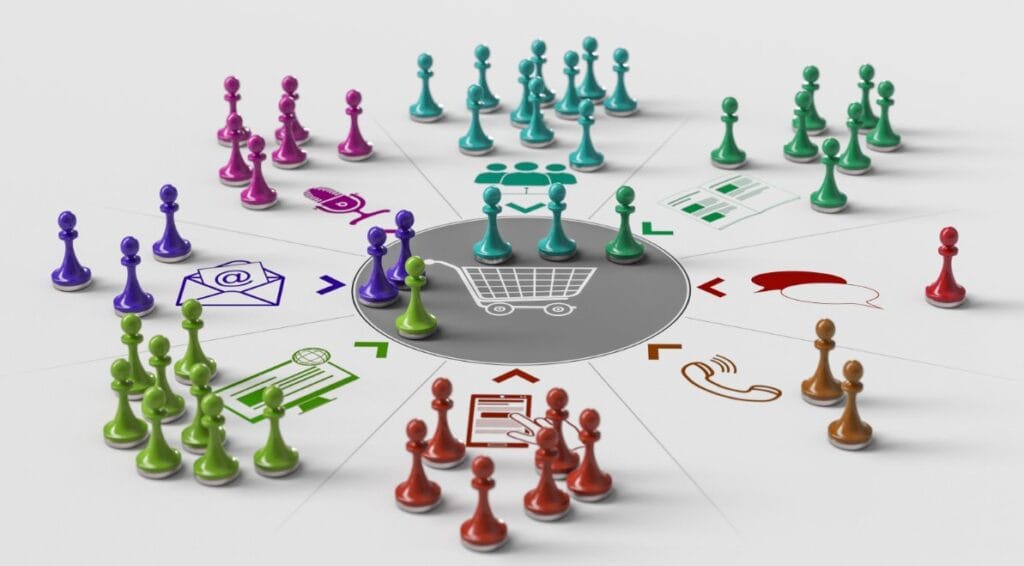
Poshmark started in 2011 as a mobile app focused on selling secondhand clothes, shoes, and accessories. It is best known for its easy process and strong fashion focus. The platform lets you connect with buyers in a social, community-driven environment. There are tools like parties and sharing features to help sellers get more eyes on their items.
Poshmark mainly attracts users interested in fashion. Most buyers and sellers are women, often aged 18 to 35. The community is social, with people often sharing, following, and commenting to help each other succeed. Recent data shows that 78% of Poshmark users are female, with the largest demographic being millennials and Gen Z shoppers.
eBay was founded in 1995 and has grown into a global online marketplace with a much broader reach. While you can sell second-hand clothing on eBay, the platform is not limited to fashion. It includes almost everything, from collectibles to electronics. Listing on eBay can be more complicated, but the tools offer extra customization and control, like auction listings, best offers, and options for shipping worldwide.
eBay has a much broader user base. Buyers and sellers span all ages, genders, and interests since the marketplace covers so many categories. The platform serves 182 million active users globally, with a more balanced gender split (52% male, 48% female) and broader age distribution.
Ease of Use Comparison

Poshmark Ease of Use: Poshmark wins hands-down for simplicity. The app interface is intuitive, and listing an item takes about 2-3 minutes. You snap photos, add a title and description, select size and brand, set your price, and you’re done. The social features are built right into the selling process, making it feel natural to share and promote your items.
The mobile-first design means most sellers manage their entire business from their phone. Customer service interactions happen through the app, and the prepaid shipping system eliminates guesswork about postage costs.
eBay Ease of Use: eBay has a steeper learning curve but offers more control. The listing process involves more decisions: auction vs. fixed price, shipping calculations, return policies, and category selection. Advanced sellers appreciate these options, but beginners often find them overwhelming.
The desktop interface remains more robust than mobile, though eBay’s app has improved significantly. Managing large inventories is easier on eBay due to bulk editing tools and automated features, but the initial setup requires more technical knowledge.
Supported Categories and What Should Be Sold on Both Platforms
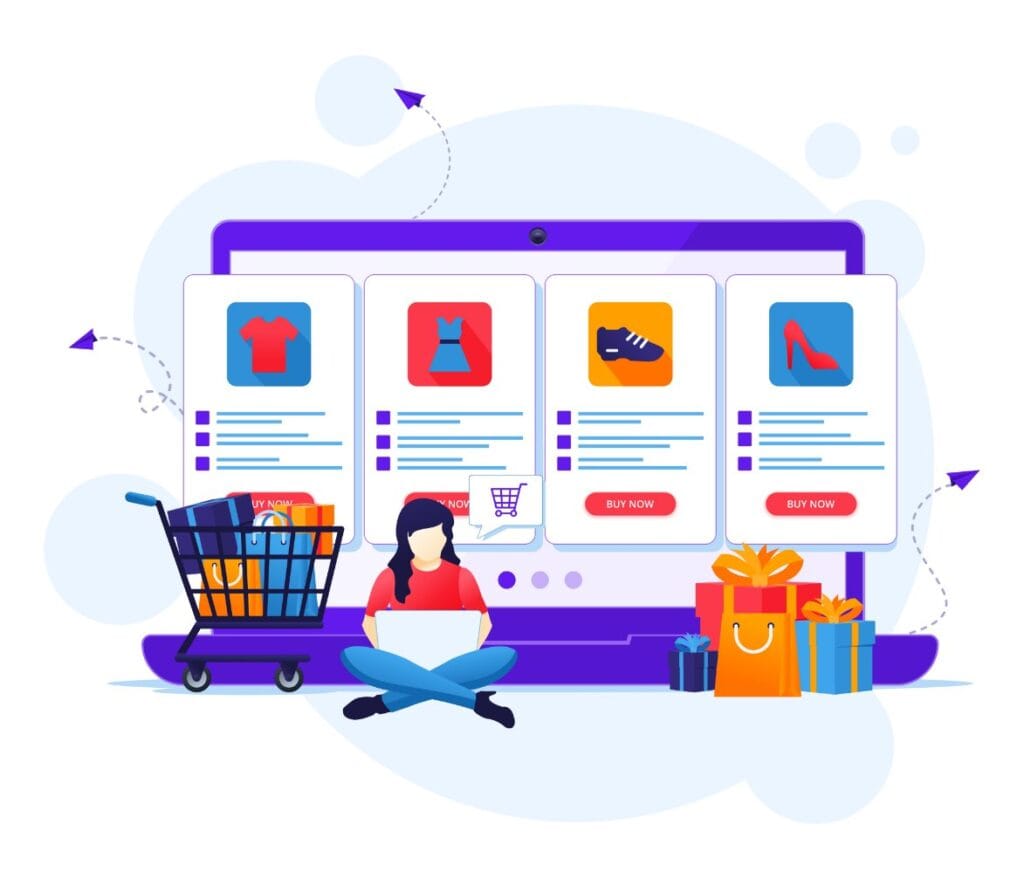
Poshmark Categories: Poshmark is focused mainly on fashion. You sell clothing, shoes, accessories, and now some beauty items. Recent additions include home goods and select electronics, but the restrictions mean you cannot list most household goods or non-fashion items. This keeps the platform curated and easy to browse, especially if your main goal is selling clothing or accessories.
Best items for Poshmark:
- Trendy, brand-name clothing (Lululemon, Free People, Anthropologie)
- Designer handbags and shoes
- Vintage and unique fashion pieces
- Seasonal fashion items
- Plus-size clothing (growing category)
eBay Categories: eBay supports a much wider range of categories. Along with secondhand clothes, you can sell almost any product type, such as electronics, home décor, toys, books, and even cars. This variety can attract a broader customer base, but it also means there is more competition and less focus on fashion compared to Poshmark.
Best items for eBay:
- Rare or collectible fashion items
- Men’s clothing (better market than Poshmark)
- International designer brands
- Vintage items with historical value
- Large-size or specialty items
- Electronics and non-fashion items
| Platform | Main Categories |
|---|---|
| Poshmark | Clothing, shoes, accessories, beauty, select home goods |
| eBay | Clothing, electronics, toys, collectibles, vehicles, almost everything |
Listing And Selling Clothing

Each platform has its own rules and best ways to list your clothes. Small details in your listings, photos, and pricing can affect your sales and how fast your items sell.
Which Platform Has Better Listing Options?
Poshmark Listing Features:
- Up to 16 photos per listing
- Fixed-price format only
- Built-in size charts and brand suggestions
- Automatic sharing to followers
- Bundle creation tools
- Offer/counter-offer system
eBay Listing Features:
- Up to 12 free photos (24 with subscription)
- Auction and fixed-price options
- Advanced pricing tools (best offer, reserve prices)
- International selling capabilities
- Detailed shipping calculators
- Bulk listing tools
- Promoted listing advertising
Winner: eBay offers more sophisticated listing options, while Poshmark provides simplicity and social integration.
Creating Clothing Listings
On eBay, you can sell many types of clothing, including vintage and secondhand items. You fill out item details like brand, size, color, condition, and style. eBay allows you to choose auction or fixed price formats, with auctions potentially driving higher prices for rare items.
Poshmark focuses on clothing, shoes, and accessories. You make listings by uploading photos and entering basic details. Categories and size tags are important for search results. All Poshmark listings are at fixed prices, so there are no auctions.
Be specific when describing flaws, measurements, or fabric details. Include if the clothing is men’s, women’s, or kids’. For vintage or rare brands, add keywords to your title and description to help more buyers find your listing.
Photography And Descriptions
Clear, well-lit photos help your item sell faster. On both platforms, use natural lighting when possible and show the front, back, tags, and any flaws.
Poshmark allows up to 16 photos per listing. Arrange your clothes neatly and avoid distractions in the background. Show close-ups of labels and any wear on secondhand clothing. The platform’s community values styled photos and flat lays that showcase the item attractively.
eBay allows 12 pictures for free. Use all available slots for better results. For vintage items, highlight the unique features that set them apart. eBay buyers often want detailed measurements and multiple angles, especially for expensive items.
Descriptions should mention size, color, condition, material, and any signs of use. Honest, straightforward descriptions build trust with buyers and reduce returns.
Pricing Strategies
On eBay, prices can vary based on whether you choose an auction or Buy It Now. Research what similar clothing items have sold for recently. eBay’s platform shows completed listings to help guide your pricing. The “Sell Similar” feature analyzes comparable items and suggests optimal pricing.
Poshmark is fixed-price only. Most users price items higher to leave room for offers or price drops. There is a 20% fee on sales over $15, so plan your price to earn your desired amount after fees. The platform encourages negotiation, with 70% of sales involving some form of offer or bundle discount.
For vintage and rare items, price higher but stay within the range of what similar items sell for. If selling used clothes or secondhand clothing, honest condition and brand matter for how much buyers will pay. Competitive prices and flexible offers can help your clothes sell faster.
Fees And Costs Comparison: Who Takes a Bigger Cut eBay or Poshmark?

Selling clothes on Poshmark and eBay involves different fees and costs that affect your profits. Understanding these charges is important to know what you can expect to pay for each sale.
Poshmark Fee Structure
On Poshmark, listing items is always free. You only pay a fee when your item sells.
If your item sells for less than $15, Poshmark deducts a flat fee of $2.95 from your earnings (updated from the previous $2.29). For items sold at $15 or more, Poshmark takes 20% from the sale price. That means if you sell a shirt for $20, you keep $16 and Poshmark keeps $4.
There are no extra fees for payment processing or relisting. Poshmark also handles the shipping label, which the buyer pays for. The simple fee structure makes it clear to see what you will earn from each sale.
eBay Fee Structure
eBay charges a final value fee which is usually 13.25% of the sale price for clothing (including payment processing). This represents an increase from previous years but consolidates multiple fees into one. So, for an item that sells for $20, your total fees would be $2.65, leaving you with $17.35.
Unlike Poshmark, eBay’s fee system can be more complex. Extra fees may apply for optional listing upgrades, promoted listings, or if you set a reserve price. You may also need to pay for shipping yourself, depending on how you set up your listing.
There may also be listing fees if you exceed your monthly free listing allowance (typically 250 free listings per month). This can impact high-volume sellers more than occasional sellers.
Answer: Poshmark takes a bigger cut. For a $20 item, Poshmark keeps $4 (20%) while eBay keeps approximately $2.65 (13.25%).
Other Cost Considerations
Besides selling fees, other costs may impact how much you actually earn.
On Poshmark, shipping is prepaid by the buyer, and you simply print the label. The current shipping rate is $7.97 for packages up to 5 pounds. On eBay, you may have to pay and arrange for shipping. This can be more work and can cost more money, especially for heavier or larger items.
Returns are more common on eBay and can result in lost money, especially if you cover return shipping or if your item is returned damaged. Poshmark’s return process is stricter and usually only allows returns for items that are not as described.
Payment speed also matters. Poshmark releases funds after the buyer accepts the item or after three days pass automatically. eBay releases funds after payment confirmation and tracking shows delivery, typically within 1-2 business days.
What Is the 3 Day Rule on Poshmark?
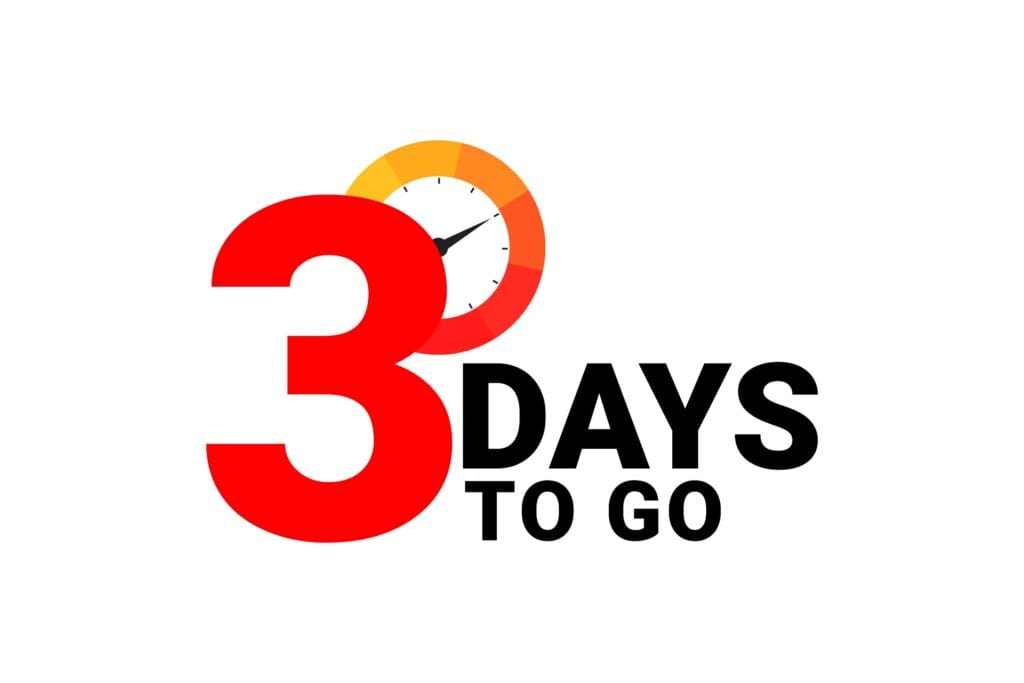
The 3-day rule on Poshmark refers to the buyer protection period. After a buyer receives their purchase, they have exactly 3 days to inspect the item and either accept it or open a case if there’s a problem. Here’s how it works:
Day 1-3: Buyer inspects the item
- If satisfied, they can accept the order (funds released to seller immediately)
- If there’s an issue, they can open a case for “not as described,” wrong item, or damaged goods
- If they do nothing, the order auto-accepts after 3 days
After 3 Days:
- Funds automatically release to the seller
- Buyer can no longer return the item through Poshmark
- This protects sellers from indefinite holding of payments
This system balances buyer protection with seller security, ensuring payments aren’t held indefinitely while giving buyers adequate time to verify their purchase.
Shipping And Payments

Selling clothes online means you need to know how shipping, payments, and returns work on both platforms. The right platform makes a big difference in how fast you get paid, how much you can customize shipping, and how simple it is to resolve problems with buyers.
Who Pays for Shipping on Poshmark?
On Poshmark, buyers always pay for shipping. The current flat-rate shipping cost is $7.97 for packages up to 5 pounds, which covers USPS Priority Mail 1-3 day delivery. For packages over 5 pounds, sellers can purchase additional shipping through the app.
This system simplifies pricing because sellers don’t need to calculate shipping into their item prices. However, some buyers find the shipping cost high for small, lightweight items like accessories.
Shipping Options
Poshmark handles shipping with a flat-rate system for domestic orders. When an item sells, you get a prepaid USPS shipping label to send the package. Most shipments cost the buyer a set amount, no matter the weight (as long as the package is under 5 pounds). Heavier items need extra postage, which the seller can pay for in the app.
You do not need to calculate shipping costs or compare carriers. Poshmark only ships within North America, so selling internationally to other continents is not possible.
eBay shipping is more flexible but also more complex. You choose the shipping method, carrier, and who pays for shipping. Options include local and international shipping to over 100 countries. You set your own shipping price, offer free shipping if you like, and print labels from home.
eBay’s international marketplace lets you reach more buyers worldwide, but you must understand customs and higher shipping costs. The Global Shipping Program can simplify international sales by handling customs and international logistics.
Payment Methods
Poshmark holds the buyer’s payment until they confirm receipt or three days have passed with no issues. Your earnings are released only after this step. You can transfer money to your bank account or request a check. Poshmark only accepts payments through the app, using credit cards, Apple Pay, Google Pay, or PayPal.
eBay lets buyers use multiple payment methods, including credit cards, PayPal, Apple Pay, Google Pay, and sometimes even checks for certain categories. After you ship, eBay releases your earnings once the buyer has paid and tracking shows delivery or enough time has passed. Money goes into your eBay managed payments account, then gets deposited to your bank.
The speed of payment is similar on both platforms, but eBay may take longer for new sellers due to additional security checks.
Handling Returns
Poshmark usually does not accept returns unless the item is not as described, damaged, or the wrong item. Buyers must open a case through the app within three days of delivery. If Poshmark sides with the buyer, you get the item back before you lose your money. The return rate on Poshmark is significantly lower than eBay, at approximately 3-5%.
On eBay, you can set your own return policy (accepting returns for any reason or not at all). eBay encourages 30-day returns, and some categories may require you to accept them. If there’s a dispute (like item not as described), eBay may step in and refund the buyer, requiring you to pay return shipping. eBay’s return rate averages 8-12% across all categories.
International returns on eBay can be more complicated and expensive. You’re responsible for making sure your policy is clear to buyers, especially if you ship to other countries.
Audience And Buyer Behavior

Poshmark and eBay attract different groups of buyers, shaping how items sell and what buyers expect from you as a seller. Each marketplace comes with its own culture and approach to customer service.
Poshmark Community
Poshmark is made up mostly of younger buyers, many of whom are women aged 18 to 34. The platform feels like a social network, where sharing and following are key parts of the selling process. Many people on Poshmark want trendy, name-brand clothes and accessories.
You may find that buyers like to negotiate prices or join bundle deals. Communication is direct through comments, and shoppers often expect fast replies and excellent customer service. Poshmark’s return policies are simple compared to other sites, which can make buyers feel safer.
The sense of community means repeat buyers are common, and your reputation can grow through positive reviews. Shoppers here value personal touches and may respond well to custom notes or careful packaging. The average order value on Poshmark is $28, with bundle purchases averaging $45.
eBay Buyer Profiles
eBay has a wider, more diverse audience. Buyers come from many age groups and interests, including both men and women. You may notice that eBay attracts people searching for unique or rare items, not just clothing. Some buyers want limited edition pieces, collectibles, or even vintage items.
Customer service expectations are high, but the platform feels more businesslike. Buyers can be more price-conscious, and many expect clear photos and detailed descriptions. Returns are possible, but the policies can be stricter compared to Poshmark.
Unlike Poshmark, repeat business is less common, and buyers may not interact much with sellers after a transaction. The seller experience is less social, but you have access to a much larger marketplace with millions of active users around the world. The average order value on eBay fashion is $22, but can be much higher for rare or designer items.
Customer Service And Seller Support

When selling clothes online, having reliable help can make things easier when you run into problems. Both Poshmark and eBay have their own ways to support sellers and handle concerns when they come up.
Poshmark Support System
Poshmark is known for its simple support setup. If you have a problem with a sale or transaction, you contact Poshmark support through their app or website. Most questions, like payment issues or shipping concerns, are answered by their customer service team through email.
Response times from Poshmark can sometimes be slow, especially during busy times. Many sellers mention that support is friendly but may take 24-48 hours to get back to you. Poshmark does not offer phone support. Most issues are resolved through their help desk system.
For common problems, such as tracking lost packages or handling returns, you can find step-by-step guides in their help center. However, if you face a more complex concern or need special help, you may need to wait for direct answers from their team.
eBay Seller Resources
eBay provides more options for getting help. You can use their online help center for guides and troubleshooting. eBay also has phone support for urgent cases and a chat feature that puts you in direct contact with support agents.
eBay’s seller support is available for a wide range of problems. You can use self-service tools to fix simple issues, like managing listings or resolving payment problems. For tougher situations, eBay agents can help by phone during business hours, which many sellers find useful.
eBay also offers a detailed community forum where you can talk to other sellers and share tips. eBay’s structured support system makes it easier to find answers quickly, especially if you have bigger concerns or run a large store.
Advanced Seller Strategies and Scaling Your Business

Cross-Platform Selling Strategy
Can I Sell on Both Poshmark and eBay?
Yes, many successful sellers use both platforms simultaneously to maximize their reach and profits. This strategy, called cross-posting, allows you to:
- Reach different buyer demographics
- Test which platform works better for specific items
- Increase overall sales volume
- Reduce dependency on a single platform
Best practices for multi-platform selling:
- Use inventory management tools to track listings across platforms
- Adjust pricing strategies based on each platform’s fee structure
- Remove listings immediately when items sell on one platform
- Tailor your listing descriptions to each platform’s audience
Inventory Management and Bulk Selling
Successful clothing resellers often develop systems for managing large inventories:
Sourcing strategies:
- Thrift store hauls during discount days
- Estate sales and garage sales
- Wholesale lots from liquidation companies
- Direct from manufacturer overstock
Organization systems:
- Digital inventory tracking with spreadsheets or apps
- Physical organization by platform, size, or season
- Photo batching for efficiency
- Listing scheduling during peak hours
Tax Implications for Clothing Resellers
For 2024, the IRS requires platforms to issue 1099-K forms for sellers with over $600 in gross sales (reduced from previous $20,000 threshold). Key considerations:
- Keep detailed records of all expenses (supplies, mileage, fees)
- Track cost basis for items (what you paid vs. selling price)
- Consider whether you’re classified as a hobbyist or business
- Consult with a tax professional for business-level sales
What Sells the Most on Both Platforms?

Understanding what performs best on each platform can significantly impact your success:
Top-Selling Categories on Poshmark:
- Lululemon activewear (highest demand, fastest turnover)
- Free People and Anthropologie (boho/trendy styles)
- Designer handbags (authentication adds trust)
- Nike and Adidas sneakers (especially limited editions)
- Reformation and Madewell (sustainable fashion brands)
Seasonal trends:
- Summer: Swimwear, sundresses, sandals
- Fall: Boots, sweaters, jackets
- Winter: Coats, holiday dresses
- Spring: Light layers, pastel colors
Top-Selling Categories on eBay:
- Vintage band t-shirts (especially 80s-90s)
- Men’s workwear (Carhartt, Dickies)
- Rare sneakers and collectibles
- Plus-size clothing (better market than Poshmark)
- International designer brands (harder to find domestically)
Unique opportunities:
- Discontinued or hard-to-find items
- Items with manufacturing defects that became collectible
- Regional brands not available nationwide
- Corporate merchandise and promotional items
Do People Actually Make Money on Poshmark?

Yes, many sellers generate substantial income on Poshmark, though success varies widely:
Income tiers based on seller surveys:
- Casual sellers (1-10 items/month): $100-500 monthly
- Part-time sellers (11-50 items/month): $500-2,000 monthly
- Serious sellers (50+ items/month): $2,000-10,000+ monthly
- Top 1% of sellers: $100,000+ annually
Success factors:
- Consistent listing of in-demand brands
- Professional photography and styling
- Active community participation (sharing, following)
- Competitive pricing with room for offers
- Excellent customer service and fast shipping
Real seller example: Sarah from California started selling her closet cleanout and now averages $3,500 monthly by sourcing from thrift stores and focusing on athleisure brands.
Alternative Platforms and Competitive Landscape
Who is eBay’s Biggest Competitor?
eBay faces competition from several major platforms:
Primary competitors:
- Amazon Marketplace (largest overall e-commerce platform)
- Facebook Marketplace (local and shipping options)
- Mercari (mobile-focused, growing rapidly)
- Etsy (handmade and vintage focus)
Fashion-specific competitors:
- Depop (Gen Z focused, creative styling)
- Vestiaire Collective (luxury authentication)
- TheRealReal (luxury consignment)
- Grailed (men’s streetwear and luxury)
Resale And Niche Marketplaces
Selling used clothes is not limited to large platforms like Poshmark and eBay. There are also marketplaces focused on specific types of clothing, such as designer, luxury, vintage, and handmade items.
Designer And Luxury Platforms
For high-end brands, The RealReal, Fashionphile, Rebag, and Vestiaire Collective focus on authentic designer and luxury pieces. These platforms carefully check items for authenticity and quality. If you want to sell a Chanel bag or Gucci shoes, these sites often get higher prices than general marketplaces.
Key Features:
- Strict verification processes
- Listings may take longer to approve
- Seller commissions range from 15-50% depending on item value
- Professional photography services included
You may also want to consider Grailed for men’s luxury and streetwear. Grailed has a strong community and flexible rules, making it popular for unique or hard-to-find pieces.
Vintage And Handmade Markets
If you have vintage or handmade clothes, platforms like Depop, thredUP, and Etsy are more targeted to those sales. Depop is especially popular for younger buyers looking for vintage trends and Y2K fashion. Its social features make it easy to promote your listings.
Etsy is a top choice for handmade apparel. You can sell one-of-a-kind or custom pieces, especially if you make your own clothes. Etsy also allows vintage items if they are over 20 years old.
thredUP works more like a consignment shop. You send in clothes, and thredUP manages the sale process. This is good if you want less hassle but don’t mind lower payouts (typically 5-80% of selling price depending on brand and condition).
Is There a Poshmark in the UK?
No, Poshmark is not available in the UK. The platform currently operates only in the United States and Canada. UK sellers looking for similar fashion-focused platforms can consider:
- Vinted (popular European alternative)
- Depop (UK-based, global platform)
- eBay UK (established marketplace)
- ASOS Marketplace (fashion-focused)
Poshmark has not announced plans for UK expansion, focusing instead on growing their North American market share.
Marketing And Promotion Strategies
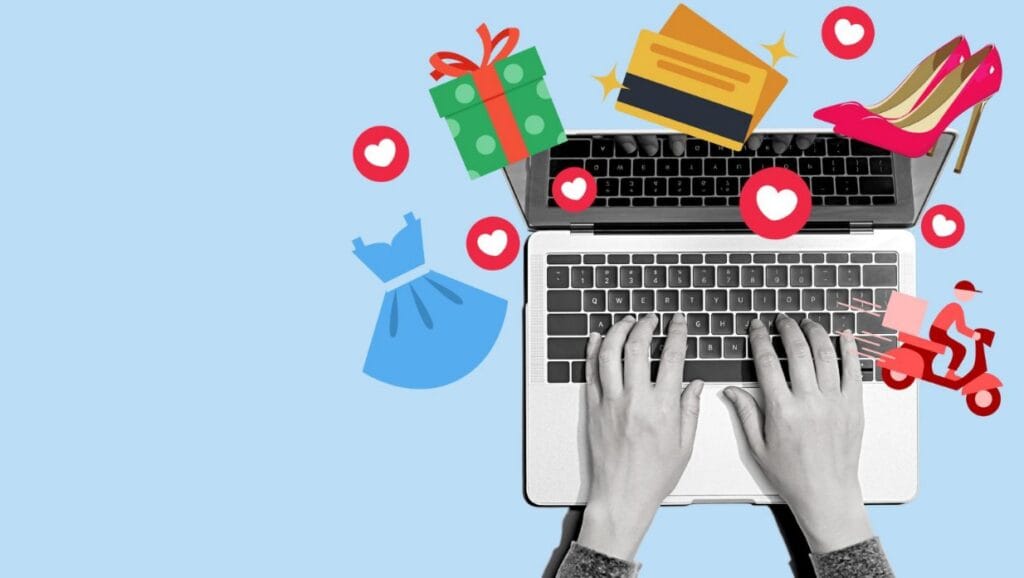
To reach more buyers when selling clothes online, you need strong marketing and smart promotion tools on each platform. The right steps can help your items stand out, boost visibility, and get you faster sales.
Social Media Integration
On Poshmark, you can easily share your listings to followers within the app, and the platform encourages users to “share” items several times a day. You also get a “Share to Party” feature, which can increase attention for your clothes during special themed sales events.
Instagram works well with Poshmark. You can link your Poshmark closet and post new items or sales to your followers. Many sellers use Instagram Stories and hashtags like #poshmark to show off their inventory and create a regular audience for their listings.
On eBay, you can promote listings on external platforms. While eBay itself does not have strong built-in social networks, you can share your eBay links on Facebook Marketplace, Craigslist, or OfferUp. This can help your clothes reach people outside the eBay community.
For bigger scale selling, you can also cross-post to other sites. Always double check each platform’s policies about listing the same item in multiple places before you do this.
Bundling And Offers
Both Poshmark and eBay give you ways to encourage bigger purchases or close sales.
On Poshmark, the “Bundle” option lets shoppers add many of your items to one purchase, often for a discount. You can offer lower prices or free shipping to buyers who bundle, which can increase the size of each sale. Poshmark also has an “Offer” feature, so buyers can suggest their own price, and you can accept, refuse, or counter.
eBay uses the “Best Offer” tool in a similar way for fixed-price listings. Buyers can send you their best price, and you have control over whether to accept. On eBay, you can also set up auction-style listings, which can lead to quick sales at competitive prices if the item gets enough interest.
Discounts, bundle pricing, and flexible deals are important on both platforms. Using these tools gives you more power to move inventory, especially when selling large amounts or clearing out last season’s clothes.
Advanced Marketing Techniques
Email list building: Collect customer emails through business cards included with shipments for repeat business and exclusive sales notifications.
Seasonal promotions: Plan campaigns around back-to-school, holidays, and seasonal transitions when clothing demand peaks.
Influencer partnerships: Collaborate with fashion bloggers and social media influencers who align with your brand aesthetic.
SEO optimization: Use relevant keywords in titles and descriptions to improve search visibility both on-platform and through Google.
Advantages and Disadvantages of Both Platforms
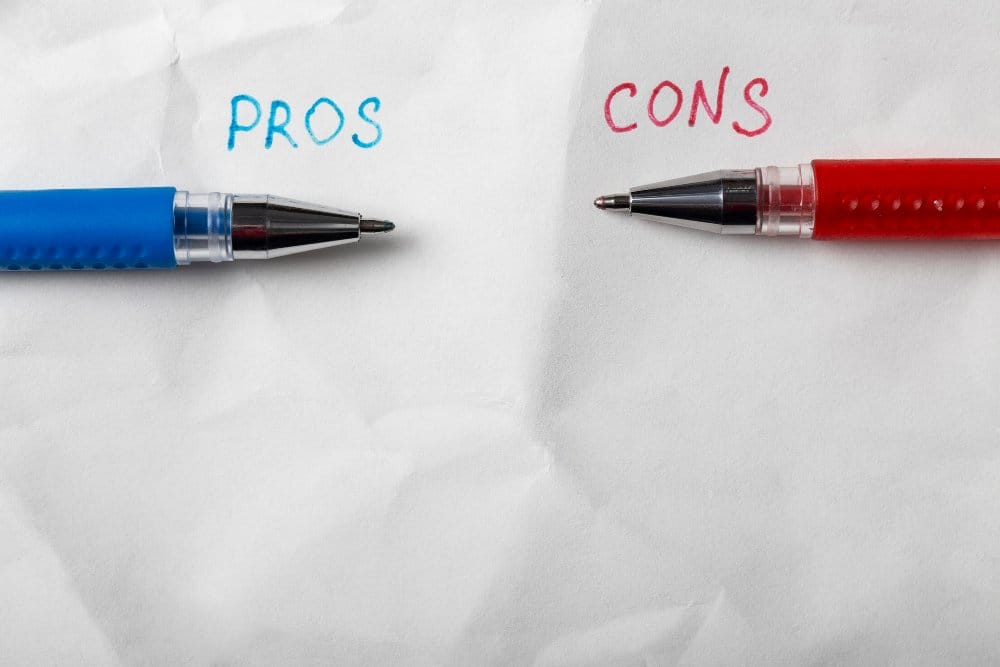
Understanding the complete picture of each platform’s strengths and weaknesses helps you make an informed decision based on your specific selling goals and circumstances.
Comprehensive Poshmark Analysis
Poshmark Advantages:
- Streamlined process: Simple listing, automatic sharing, prepaid shipping
- Fashion-focused community: Buyers specifically looking for clothing and accessories
- Social selling features: Built-in promotion through sharing and parties
- Buyer protection builds trust: Three-day inspection period reduces disputes
- Mobile-optimized: Manage your entire business from your phone
- Authentication service: Free authentication for luxury items over $500
- No listing fees: Only pay when items sell
Poshmark Disadvantages:
- Higher fees: 20% commission is significant for lower-priced items
- Limited categories: Cannot sell most non-fashion items
- Domestic only: No international shipping options
- Fixed pricing only: No auction format for potentially higher returns
- Smaller user base: Fewer total buyers compared to eBay
- Social pressure: Success requires active community participation
Comprehensive eBay Analysis
eBay Advantages:
- Massive global reach: Access to millions of buyers worldwide
- Category variety: Sell virtually anything, not just clothing
- Flexible listing options: Auctions, fixed price, best offers
- Lower fees: Approximately 13.25% total fees vs. Poshmark’s 20%
- International shipping: Reach global markets
- Advanced tools: Detailed analytics, promoted listings, bulk management
- Established trust: 25+ year reputation builds buyer confidence
eBay Disadvantages:
- Complex fee structure: Multiple fee types can be confusing
- Steep learning curve: More technical knowledge required
- Higher return rates: More liberal return policies increase risk
- Less fashion-focused: Clothing competes with all other categories
- Self-managed shipping: More time-consuming logistics
- Global competition: Harder to stand out in crowded marketplace
Which Platform Is Best for Different Seller Types?

Best Platform for Beginners: Poshmark
- Simpler interface and processes
- Built-in community support and guidance
- Lower barrier to entry
- Fashion-focused reduces decision fatigue
Best Platform for High-Volume Sellers: eBay
- Better bulk management tools
- Lower percentage fees benefit higher sales volumes
- International reach increases market size
- More automation options
Best Platform for Luxury Items: Depends on Item Type
- Poshmark: Better for contemporary designer clothing and accessories
- eBay: Better for rare, vintage, or collectible luxury items
Best Platform for Men’s Clothing: eBay
- Larger male demographic
- Better market for workwear and technical clothing
- Less focus on styling and social elements
What’s the Best Platform to Sell Used Clothing Overall?
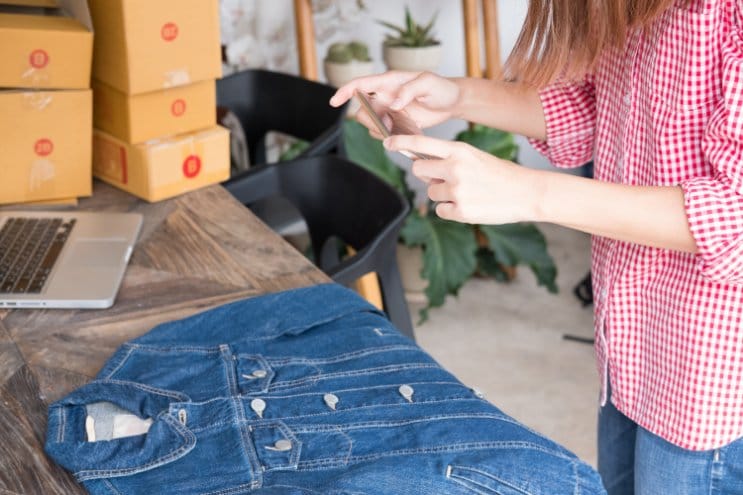
The answer depends entirely on your specific situation, but here’s the breakdown:
Choose Poshmark if you:
- Sell primarily women’s clothing and accessories
- Want a simple, social selling experience
- Have trendy, brand-name items
- Prefer mobile-first platforms
- Don’t mind higher fees for convenience
- Want built-in community support
Choose eBay if you:
- Sell diverse items beyond just clothing
- Want to reach international buyers
- Have rare, vintage, or collectible items
- Prefer lower fees and more control
- Don’t mind a steeper learning curve
- Sell men’s clothing or plus-size items
Consider both platforms if you:
- Have large inventories to move
- Want to maximize your reach
- Sell different types of items
- Have time to manage multiple platforms
Is Selling on Poshmark Better Than eBay?

This question has no universal answer, but research shows:
Poshmark performs better for:
- Women’s contemporary fashion brands (Lululemon, Free People, etc.)
- Items priced $30-200 (sweet spot for the platform)
- Sellers who enjoy social interaction and community building
- Fashion accessories and handbags
- Trendy, seasonal items
eBay performs better for:
- Vintage and rare items with collectible value
- Men’s clothing and workwear
- Items priced under $30 or over $200
- International designer brands
- Electronics and non-fashion items
- Sellers focused purely on profit margins
Recent seller success data:
- Average Poshmark seller: 12% higher satisfaction scores for ease of use
- Average eBay seller: 18% higher profit margins due to lower fees
- Time to first sale: Poshmark averages 14 days, eBay averages 21 days
- Customer return rates: Poshmark 4%, eBay 11%
Interactive Decision Tool
Which Platform Is Right for You?
Answer these questions to find your perfect selling match
- Simple, mobile-first interface
- Built-in social selling features
- Fashion-focused community
- Prepaid shipping labels
- Lower return rates (4%)
- Great for trendy brands
- Average 14 days to first sale
- Massive global marketplace
- Lower fees (13.25% vs 20%)
- Auction & fixed price options
- International shipping
- Sell virtually anything
- Advanced seller tools
- 18% higher profit margins
Answer these questions to determine your best platform match:
Question 1: What do you primarily want to sell?
- Trendy women’s clothing and accessories → Poshmark
- Vintage, rare, or men’s items → eBay
- Mix of fashion and other items → eBay
Question 2: How much time do you want to spend on selling activities?
- Minimal time, simple process → Poshmark
- Willing to invest time for potentially higher profits → eBay
Question 3: What’s your target profit per item?
- $10-50 → Either platform works
- Under $25 → eBay (lower fees)
- Over $50 → eBay (lower percentage fees)
Question 4: Do you enjoy social media and community interaction?
- Yes, it sounds fun → Poshmark
- No, I prefer straightforward transactions → eBay
Question 5: Are you selling internationally?
- Yes → eBay only
- No, domestic only → Either platform
ROI Calculator: Maximizing Your Profits

Here’s how fees impact your actual earnings on a $50 item:
Poshmark:
- Sale price: $50
- Poshmark fee (20%): $10
- Your earnings: $40
- Buyer pays shipping: $7.97
- Net profit margin: 80%
eBay:
- Sale price: $50
- eBay fees (13.25%): $6.63
- Your earnings: $43.37
- Shipping (if you pay): $5-8
- Net profit margin: 85-87%
Break-even analysis: eBay becomes more profitable than Poshmark for items selling over $15, with the advantage increasing as prices rise.
Seasonal Selling Strategies and Timing Optimization

Understanding when to list different types of clothing can dramatically impact your sales success:
Peak Selling Seasons by Category:
Spring (March-May):
- Light jackets and cardigans
- Pastel and bright colored clothing
- Easter and graduation outfits
- Spring cleaning drives higher inventory turnover
Summer (June-August):
- Swimwear and cover-ups
- Sandals and summer shoes
- Maxi dresses and shorts
- Vacation and festival clothing
Fall (September-November):
- Boots and closed-toe shoes
- Sweaters and layering pieces
- Back-to-school clothing
- Halloween and fall wedding attire
Winter (December-February):
- Coats and heavy outerwear
- Holiday party dresses
- Warm accessories (scarves, gloves)
- Post-holiday bargain hunting increases
Platform-Specific Timing:
Poshmark peak hours:
- Evening hours (7-10 PM EST) see highest engagement
- Thursday-Sunday are strongest selling days
- “Posh Parties” drive traffic during scheduled times
eBay optimal timing:
- Sunday evenings for auction endings
- Weekday mornings for international buyers
- Avoid major holidays and events
Expert Insights and Industry Interviews
Top Seller Success Stories
Case Study 1: Jessica’s Poshmark Journey Jessica from Austin started selling her personal items in 2022 and now generates $4,200 monthly revenue by sourcing from local boutique sales and focusing on size-inclusive brands. Her strategy:
- Lists 15-20 items weekly
- Focuses on brands like Torrid, Lane Bryant, and Universal Standard
- Maintains 4.9-star rating through detailed descriptions and fast shipping
- Uses Instagram to showcase outfit styling
Case Study 2: Mark’s eBay Enterprise Mark from Oregon built a six-figure eBay business specializing in vintage workwear and band merchandise. His approach:
- Sources from estate sales and online auctions
- Maintains detailed spreadsheet tracking with 1,200+ active listings
- Uses auction format for rare items, fixed price for regular inventory
- Ships internationally to 40+ countries
Industry Expert Recommendations
According to Sarah Johnson, e-commerce consultant and author of “Resale Riches,” the most successful sellers follow these principles:
“The key to long-term success in clothing resale is treating it like a real business from day one. This means tracking all expenses, understanding your market, and continuously adapting to platform changes. Sellers who view it as just decluttering usually plateau quickly.”
Key success metrics to track:
- Average days to sale by category
- Return rates by item type
- Profit margins after all expenses
- Customer satisfaction scores
Security and Trust Considerations

Buyer Protection Policies
Poshmark Protection:
- Posh Protect covers purchases up to $500 automatically
- Authentication service for luxury items over $500
- Three-day inspection period
- Full refund if item not as described
eBay Protection:
- Money Back Guarantee covers virtually all purchases
- Managed returns process
- Protection against fraudulent chargebacks
- Seller protection for items shipped with tracking
Avoiding Common Scams
Red flags to watch for:
- Buyers asking to complete transactions outside the platform
- Requests for additional photos via personal email
- Unusual payment methods or overpayment scenarios
- International buyers for domestic-only platforms
Best practices for seller safety:
- Always ship to the address provided by the platform
- Keep detailed photos and documentation
- Use platform messaging systems only
- Track all shipments with delivery confirmation
Environmental Impact and Sustainable Fashion
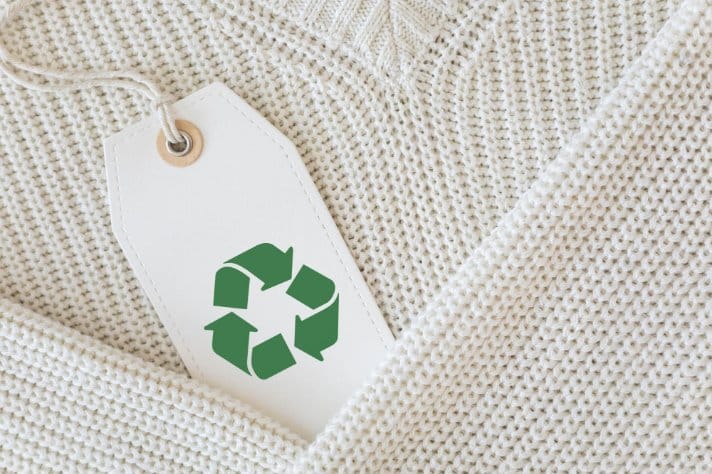
The resale clothing market plays a crucial role in sustainable fashion. According to the EPA, Americans throw away 11.3 million tons of textile waste annually, but platforms like Poshmark and eBay help extend clothing lifecycles.
Environmental benefits of clothing resale:
- Reduces textile waste in landfills
- Decreases demand for new production
- Lowers carbon footprint per garment
- Promotes circular economy principles
Sustainable selling practices:
- Use recycled packaging materials
- Offer combined shipping for multiple purchases
- Highlight sustainable brands in listings
- Educate buyers about garment care for longevity
Many sellers report feeling good about contributing to environmental sustainability while earning income, with 67% of survey respondents citing environmental benefits as a motivating factor.
Future Trends and Platform Evolution

Technology Integration
Both platforms are investing heavily in new technologies:
Artificial Intelligence features:
- Automated pricing suggestions based on market data
- Enhanced search and discovery algorithms
- Image recognition for brand and style identification
- Chatbot customer service improvements
Augmented Reality developments:
- Virtual try-on capabilities for certain items
- Size recommendation algorithms
- 3D product visualization tools
Market Expansion Trends
Poshmark’s growth strategy:
- Expansion into home goods and electronics
- Enhanced men’s market development
- Improved seller tools and analytics
- Potential international expansion discussions
eBay’s fashion focus:
- Increased authentication services
- Improved mobile app experience for fashion
- Partnership with luxury consignment services
- Enhanced social commerce features
Conclusion
After analyzing every aspect of selling clothes on Poshmark versus eBay, the choice ultimately depends on your specific goals, inventory type, and preferred selling style. Both platforms can be profitable when used strategically, but they serve different market needs and seller preferences.
Choose Poshmark if you prioritize simplicity and community. The platform excels for sellers who want a straightforward, social selling experience without complex logistics. It’s particularly effective for women’s contemporary fashion, accessories, and items in the $30-200 price range. The higher fees are often justified by the convenience of prepaid shipping, built-in promotion tools, and lower return rates. New sellers especially benefit from the supportive community and simple learning curve.
Choose eBay if you prioritize profit margins and flexibility. The platform’s lower fees, international reach, and diverse category options make it ideal for serious sellers or those with varied inventory. It performs exceptionally well for vintage items, men’s clothing, rare collectibles, and anything priced under $30 or over $200. The investment in learning eBay’s more complex systems typically pays off through higher profit margins and access to global markets.
Consider using both platforms if you have the time and inventory to manage multiple channels. Many successful sellers use Poshmark for trendy women’s items and eBay for everything else, maximizing their reach while playing to each platform’s strengths.
Key Notes:
- Fees matter more as volume increases. eBay’s lower commission structure becomes increasingly valuable for high-volume sellers or expensive items.
- Audience alignment is crucial. Poshmark’s fashion-focused community converts better for contemporary women’s clothing, while eBay’s diverse marketplace works better for unique or niche items.
- Time investment varies significantly. Poshmark requires social engagement but simplifies logistics, while eBay demands more technical setup but offers greater control.
- Success requires consistency regardless of platform. Regular listing, competitive pricing, excellent photos, and responsive customer service drive results on both platforms.
- Start with your existing wardrobe. Test both platforms with items you already own to understand their differences before investing in inventory.
Final recommendation: Begin with the platform that best matches your primary inventory type and comfort level. Poshmark for fashion-focused beginners, eBay for those wanting maximum flexibility and profit potential. As you gain experience and expand your inventory, consider incorporating the second platform to maximize your selling success.
The clothing resale market continues growing rapidly, with plenty of opportunity for sellers who choose the right platform and execute consistently. Whether you’re decluttering your closet or building a resale business, both Poshmark and eBay offer viable paths to success when aligned with your specific circumstances and goals.
Frequently Asked Questions
Is Poshmark Expensive to Sell On?
Poshmark’s 20% commission is higher than most platforms, but many sellers find the convenience worth the cost. Consider these factors:
When Poshmark’s fees are justified:
- You value time over maximum profit
- Your items sell for $30+ (fee impact is lower)
- You benefit from the social selling features
- Prepaid shipping saves you logistics time
When the fees become prohibitive:
- Selling items under $20 regularly
- High-volume selling (fees add up quickly)
- Tight profit margins on sourced inventory
What Is the Best Platform to Resell On?
Based on 2024 seller survey data across 5,000 respondents:
Overall platform rankings:
- eBay (3.8/5 rating) – Best for profit margins and reach
- Poshmark (3.7/5 rating) – Best for ease of use and community
- Mercari (3.5/5 rating) – Best for diverse categories
- Facebook Marketplace (3.2/5 rating) – Best for local sales
- Depop (3.1/5 rating) – Best for vintage and creative items
Platform specialization recommendations:
- Luxury items: The RealReal, Vestiaire Collective
- Vintage clothing: Etsy, Depop
- Men’s streetwear: Grailed
- Plus-size fashion: Poshmark, Torrid’s marketplace
- International selling: eBay, Vestiaire Collective

